“All of a sudden, this big crack appeared in the snow . . . ” an avalanche forming directly in front of him, introducing the imminent and clear danger forcefully to adventure snowshoer Andrew Nugara.
Noteworthy are the avalanche conditions that day. “We checked, and they were favorable.” So no problems expected, but the mountains didn’t get the email. Surviving, he and his brother Mark experienced what can only be guessed by the rest of us: ” . . . how powerful they could be. The best thing to do is stay out of them” when conditions warrant, but one remains alert no matter what.
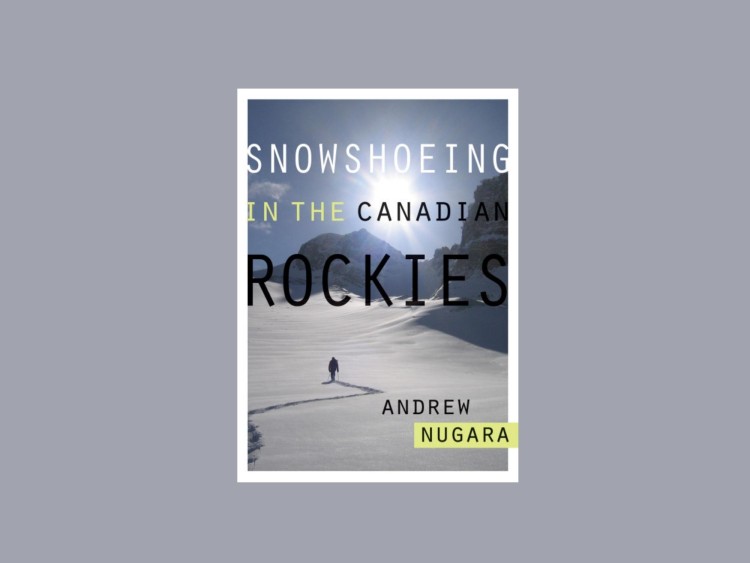
The publisher, Rocky Mountain Books, specializes in the genre. “Founded in 1979 by passionate and renowned mountaineers Tony and Gillean Daffern, RMB has grown to become one of Canada’s more vibrant, long-standing, and evolving book publishers.” Photo: RM Books
Some of the links in this article may contain affiliate links. When you purchase using these links, part of the proceeds go to Snowshoe Mag. Additionally, as an Amazon Associate, we earn from qualifying purchases. Please see our disclosure for more details.
Avalanche education in Nugara’s book
In the must-have book Snowshoeing in the Canadian Rockies, Nugara lays out critically vital information to incorporate in one’s training for all snowshoers, regardless of skills in avalanche-prone destinations. He writes, “Of course, the ‘anyone can snowshoe’ rule does not apply to the extreme end of snowshoeing called snowshoe mountaineering. The technical demands of this activity need formal training.”
Yes, training. Strap your snowshoes on and go. The joy of snowshoeing has just graduated with a more advanced degree if you consider venturing into the beauty of high mountains covered with frozen flakes. Or ascending to the stars where the book uses a title “To boldly go where no man has gone before.”
With “only one harrowing experience” with avalanches–none being the best number–Nugara noted it “took us down about 15 meters. Neither of us could do anything except ride the slide down. Fortunately, it stopped within ten seconds. My brother Mark picked himself out of the debris, made sure I was okay, and then we both descended, using the rocky slope on the side of the avalanche slope. We turned around and went home.”

Have to get up high for vistas not found trekking at the local park. Learn how to be safe in these areas in this book. Photo: Andrew Nugara
The importance of training
The pages devoted to avalanches in this book about snowshoeing in the Canadian Rockies, which Nugara flatly rates as “the most important section of this book,” offer more reading, references, and classroom courses one can avail themselves of along with ways to gain “hands-on experience.” Only somewhat tongue-in-cheek, he advises all four are necessities. However, hopefully, the first three will precede the latter for everyone.
Nugara lists several avalanche training sites in his backyard of Calgary, Banff, Canmore, and northern neighbor Edmonton. The American Institute for Avalanche Research and Education [AIARE] provides a plethora of dates for training at mostly United States locations led by Colorado, Wyoming, Washington, New Hampshire, Utah, Oregon, and California. In addition, the Avalanche Academy conducts classes in the European Alps where they state, “The adventure . . . is what we all dream of but avalanche is our worst nightmare.”
Read More: Why All Snowshoers Should Be Avalanche Aware (Even Beginners)

A view to take your breath away; you, too, can be there either in person or with Andrew Nugara through his book. Photo: Andrew Nugara and RM Books
Know the hazards
Nugara lists four types of backcountry avalanches followed by commentary on how to recognize them: Slab, loose snow, cornice collapse, and ice. Details on each offer compelling content in the book. Slab avalanches win the “Danger Zone” title as Kenny Loggins sings, “because of their frequency, not necessarily their destructive force.” Nugara covers the essential particulars of these disasters, like identifying the most crucial key to forecasting an avalanche.
His avalanche chart [pg 37] provides a numeric methodology for checking avalanche hazards [predicted by the avalanche center] against danger, which rates the terrain. This table created by Frank Baumann allows one to estimate a risk value – low, moderate, or high. Baumann’s Bivouac website offers an enormous database for more than 30,000 mountains, thousands of backroads, photos, trails, and trip reports. It’s genuinely the Canadian Mountain Encyclopedia.
Ultimately after gathering the odds, “It’s up to you to decide . . . .” As the teacher Nugara is [he studied music and physics], caution remains abundant. “. . . These are general guidelines and should never be a substitute for . . . good judgment.”
Whether you snowshoe in avalanche zones or not, information about potential problems along with methods to fortify your defenses seems essential in many other geographies, such as possibly falling in or becoming trapped by deep snow.
Read More: Avalanche Safety Basics for Snowshoers: Warning Signs and Danger Zones
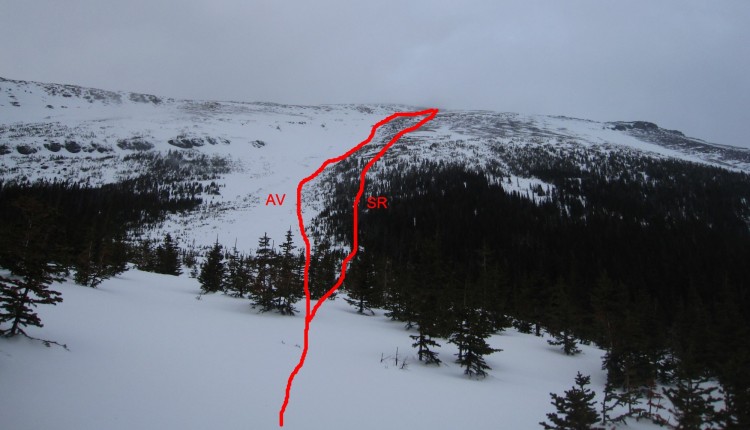
From the base of the avalanche slope, one takes the SR [Safer Route] through the woods to reach “a phenomenal summit view.” Photo: RM Books
Strategies for danger
Nugara suggests few solutions if one finds trouble since “a lot of unpredictable things like weather suddenly creating havoc, batteries that fail meaning GPS fails, along with other pretty frightening situations. In these scenarios, go through a thought process where you don’t panic, keep calm, do one thing at a time, [and] focus on the task right at hand.” A way of interpreting that advice, don’t get too far ahead of yourself in a self-rescue.
Be aware in the Rockies, with prevailing winds west to east, that the leeward slopes are notorious for danger. He writes, slopes “that are gentle on the west, then blow snow over the mountain top (become) loaded” on its lee-side. Over time, the pack layers itself to dangerous levels like stacking a cake, finally resolving its inherent instability through avalanches.
As part of the destinations listed in this book (see below), examine his photos accompanying these routes for avalanche-specific information. Each black-and-white photo of the slope or mountain shows a route traced in red, either earning an AV [avalanche slope] or SR [safer route] stamp. Glancing through them, one starts to feel for what might be the better route, which generally means safer but more challenging.
Many photos have other features one needs to recognize or know. For example, the scariest photo in my eyes [pg 153] shows a vast cornice overhanging a high ledge. Peering at it, one suddenly discovers a hidden phobia. Acrophobia, the fear of heights, or worse, aeroacrophobia, fearing scary open high places. Imagine the snow might break off in one more step, leaving you in a world of trouble.
Read More: Avalanche Avoidance Tips and FAQ
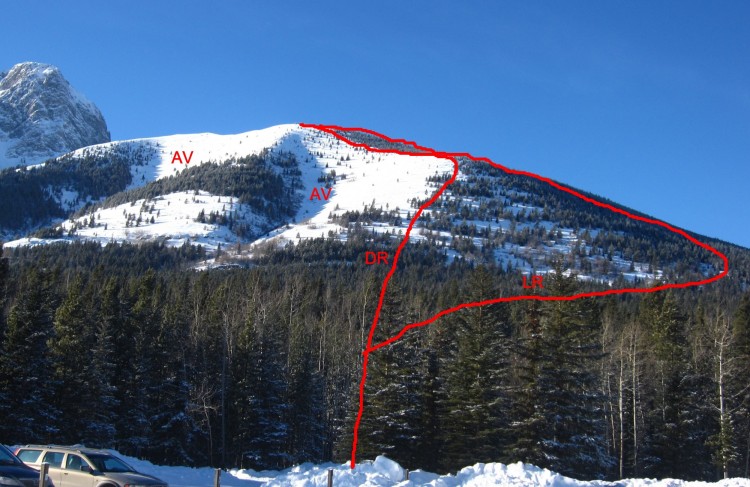
The Mount Kidd Lookout trail, up to five hours round trip. AV: Avalanche Risk DR: Direct Route LR: Longer, Safer Route. Photo: RM Books
Find your trail in the Canadian Rockies
In addition to the plethora of avalanche education this book, use Nugara’s suggested treks in Snowshoeing in the Canadian Rockies to find your comfort in the difficulty level and risk mix you want to tackle. For example, Nugara explains the Kananaskis area, just West of Calgary, offers official snowshoe trails, a rarity in the Rockies. Perhaps that meets your need while experiencing snowshoe trekking the first time.
Appendix B covers snowshoeing frozen creeks and lakes, a few of which we covered in Banff National Park. Furthermore, Appendix C organizes the treks by the seriousness of the difficulty where Nugara writes, “Note that the majority of trips in this guidebook are classified as intermediate and do require avalanche gear.”
Finally, consider Appendix A: snowshoe ascents on the Wapta Icefield. Enjoy his delight in revealing “huts in the area, specifically Bow Hut, provide perfectly situated bases where you can hang out for a couple of days while bagging peaks.”
No matter the trip selected, 61 by my count, the book provides difficulty levels, hazard ratings, mountain height, elevation gain, round-trip distance, and estimated time [the times invariably are longer than one thinks]. You’ll also find a map notation along with the site identification, such as Ruby Ridge’s Gem Trek in Waterton Lakes National Park. Furthermore, Appendix D lists 27 more trips. Beware Mount Fairview with a “serious avalanche danger.”
Even if you never plan to travel on the routes in the Canadian Rockies, the takeaway from the book means one now possesses tools to develop similar data for any area you want to snowshoe. One needs to create this same list before venturing into some new territory.
Read More: Top Winter Hiking Trails and Apres Experiences in the Canadian Rockies

The book separates trails by difficulty to choose based on comfort level. Here, the author is at the Upper South Ridge of Mt. James Walker. Photo: Andrew Nugara
A few other tips from Nugara for the area
Another Nugara tip to consider: “When traveling outdoors in the cold months, you can never take too much extra clothing with you . . . A balaclava [like our review of this one] or equivalent is also essential to have . . . (allowing) me to survive should I be forced to bivy overnight” or if temperatures suddenly plunge. The book includes information one needs before engaging in a thrilling trek into the high Rockies or any other treacherous mountain range.
Plan on plenty of blunt talk in this book by Andrew Nugara, Snowshoeing in the Canadian Rockies. It will help keep you safe. For this example, he shares this caution for Mount Haffner in the Kootenay National Park. “Wait until late winter or early spring to make an attempt unless seven hours of knee-deep post-holing is your thing!” Or, when looking up at the mountains, “The ascent slopes are deceptively long.”
Add an ice ax to your gear along with carrying crampons (read our review of Yaktrax). Poles become commonplace. Learn a new snowshoe maneuver, kick-stepping, a vital aid in descending steep slopes, the norm when returning from those vista views others never, ever see. Nugara’s clear and concise writing, along with color photos and topographic maps, allows one to grasp the ideas needed to make those summits with relative ease and safety. Hard work in many cases, but what’s wrong with that, particularly when the rewards earned and memories gained last forever.
Pick up new words for your vocabulary like “whumping,” the sound an avalanche makes as it begins. Don’t ignore its call. Just hope and prepare, so you never hear it. Like all rules and exceptions, not all avalanches announce their intention.
Read More: What To Bring When Snowshoeing: Top Accessories for the Day Hiker
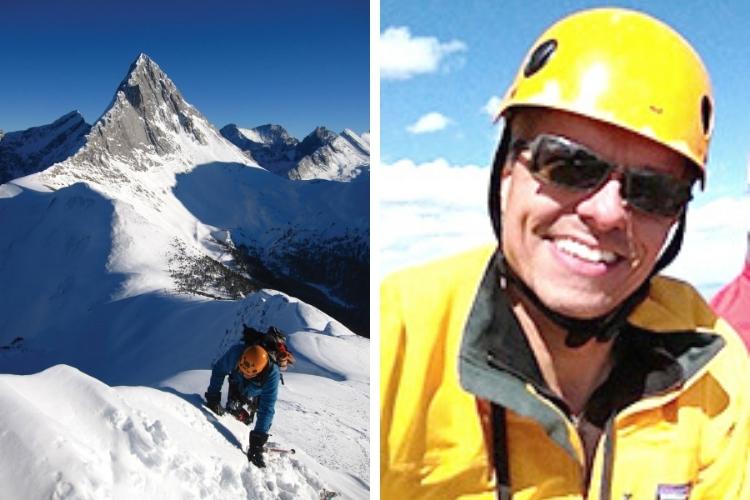
R: If prepared and you snowshoe safely, have incredible views. L: Andrew W Nugara must be nearing a thousand ascents! Photos: Andrew Nugara and RM Books
Overall
The world of snowshoeing unknowingly changed in 1979: Andrew Nugara landed in Calgary, Alberta, from England. Later, lifting his eyes after completing formal education, he discovered another passion; ever the pioneer, his own Canadian Rockies.
Perhaps unbeknownst at the time, he began a life journey to educate snowshoers about the beauty, thrills, and real danger in trekking those high mountain peaks. He writes, “There is absolutely no place I’d rather be on a crisp, cold and clear January day than in the Rockies, surrounded by mountains and snow, a deep blue sky above and the sun illuminating the landscape in unequaled brilliance.” So if you can’t make it to those peaks, enjoy it through his eyes and experience.
Join Andrew Nugara with any of his titles. But most of all, put a copy of Snowshoeing the Canadian Rockies on your “Best Of” bookshelf.
Have you read Andrew Nugara’s book about snowshoeing in the Canadian Rockies? Would you read it? What are your insights and recommendations for the area? Please share your thoughts with us in the comments below.
This article was first published on December 25, 2015, and was most recently updated on February 13, 2022.
Read Next: Why You Should Use Snowshoes On Your Next Mountaineering Adventure

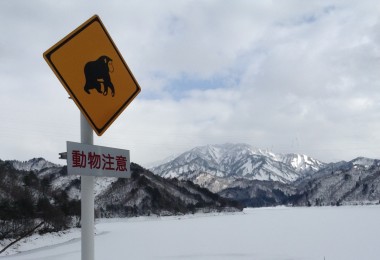

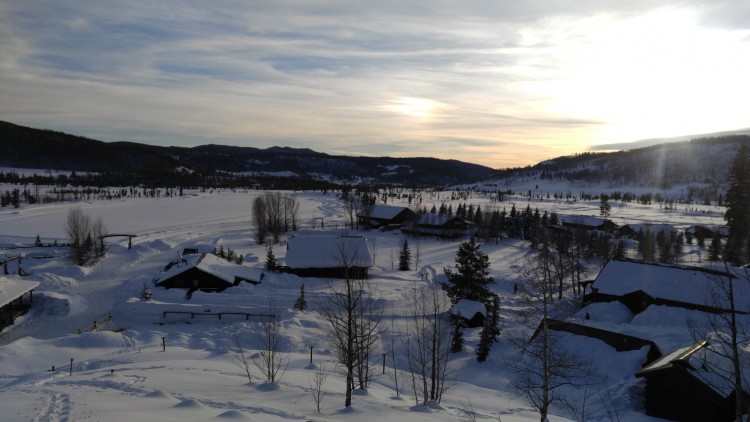


Leave a Comment